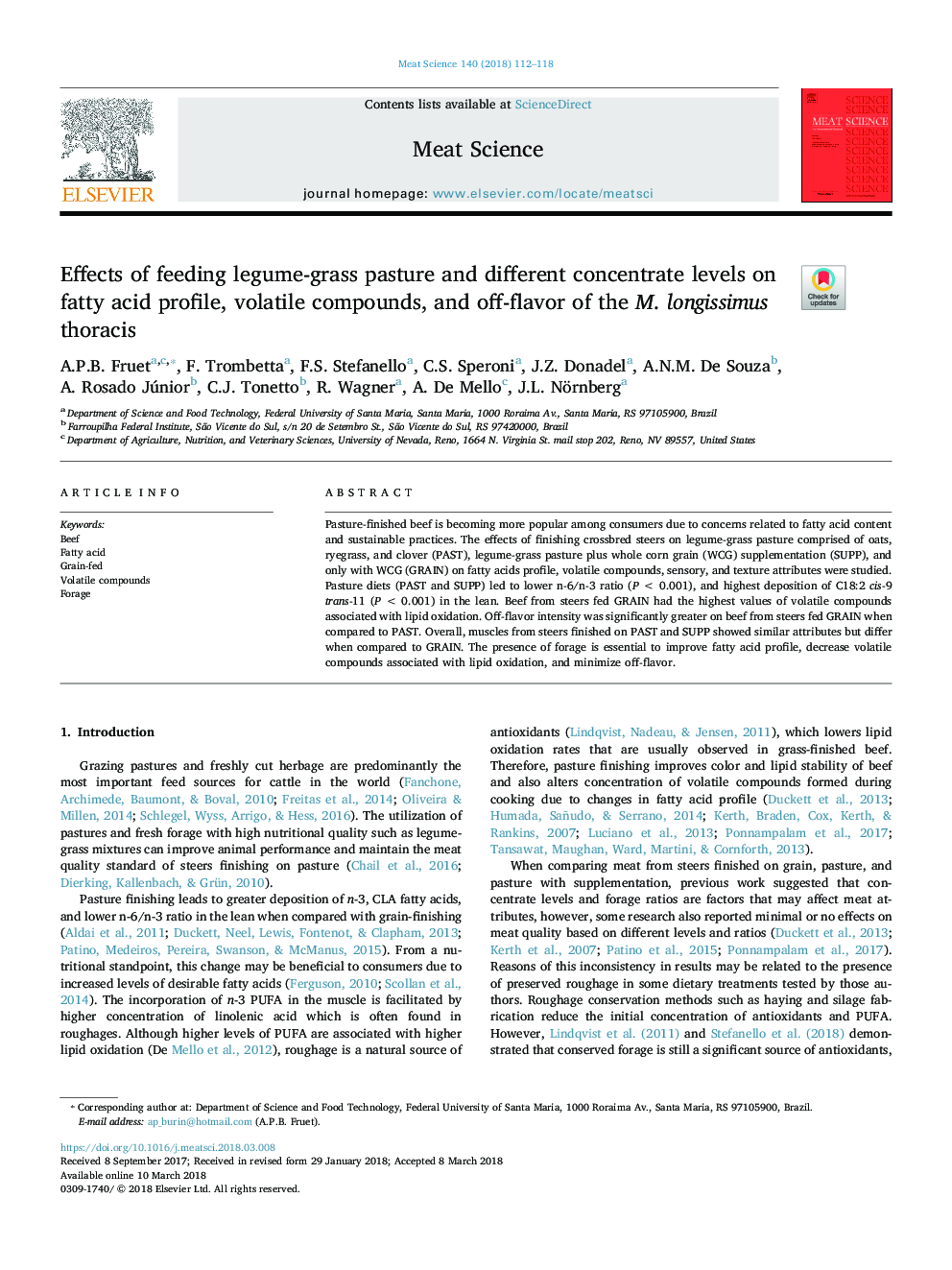| Article ID | Journal | Published Year | Pages | File Type |
|---|---|---|---|---|
| 8502840 | Meat Science | 2018 | 7 Pages |
Abstract
Pasture-finished beef is becoming more popular among consumers due to concerns related to fatty acid content and sustainable practices. The effects of finishing crossbred steers on legume-grass pasture comprised of oats, ryegrass, and clover (PAST), legume-grass pasture plus whole corn grain (WCG) supplementation (SUPP), and only with WCG (GRAIN) on fatty acids profile, volatile compounds, sensory, and texture attributes were studied. Pasture diets (PAST and SUPP) led to lower n-6/n-3 ratio (Pâ¯<â¯0.001), and highest deposition of C18:2 cis-9 trans-11 (Pâ¯<â¯0.001) in the lean. Beef from steers fed GRAIN had the highest values of volatile compounds associated with lipid oxidation. Off-flavor intensity was significantly greater on beef from steers fed GRAIN when compared to PAST. Overall, muscles from steers finished on PAST and SUPP showed similar attributes but differ when compared to GRAIN. The presence of forage is essential to improve fatty acid profile, decrease volatile compounds associated with lipid oxidation, and minimize off-flavor.
Related Topics
Life Sciences
Agricultural and Biological Sciences
Food Science
Authors
A.P.B. Fruet, F. Trombetta, F.S. Stefanello, C.S. Speroni, J.Z. Donadel, A.N.M. De Souza, A. Rosado Júnior, C.J. Tonetto, R. Wagner, A. De Mello, J.L. Nörnberg,
